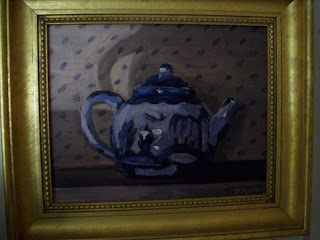 Knitting Out Loud is proud to release our fifteenth audiobook, ARCTIC LACE! This wonderful audiobook is beautifully and lovingly read by its accomplished author Donna Druchunas, who was an absolute delight to work with.
Knitting Out Loud is proud to release our fifteenth audiobook, ARCTIC LACE! This wonderful audiobook is beautifully and lovingly read by its accomplished author Donna Druchunas, who was an absolute delight to work with.ARCTIC LACE is the story of Donna's personal quest for the mysterious luxury yarn qiviut and the elusive Native Alaskan women who knit it into gorgeous lace patterns. Donna tells the moving stories of the women of the Oomingmak Musk Ox Producers’ Co-operative (do check out their great website, one look will make you smile) in Anchorage, stories reflecting their courage and determination to maintain and honor a traditional culture in the midst of contemporary pressures. We learn about the rare Musk Ox from which qiviut comes, and hear remarkable stories of the daring first European explorers to traverse Alaska’s inhospitable terrain.
Donna Druchunas is the author of Successful Lace Knitting, Ethnic Knitting Exploration: Lithuania, Iceland, and Ireland, Kitty Knits and The Knitted Rug. She designs knits for Family Circle Easy Knitting, Interweave Knits, Knitter’s, PieceWork and several yarn companies.
Join Donna this fall on her Canada & New England Knitting Cruise! I can't imagine anything more fun! It is a nine day cruise which stops, among other exciting places, in Bar Harbor, Maine, one of the most beautiful spots on earth.
My garden here in Maine is just stirring to life. Below are Squill, or Scilla, which I dug up from the side of the road in Blue Hill (so I think of them as Blue Hill Squill) at the prompting, or rather bullying, of my delightful plant thieving neighbor Bettie Thornton (Bettie passed away some years ago, but she could out dig, out garden me right up to the end and I miss her very much). You can see that the Squill have naturalized in the grass.
 My hellebore!
My hellebore!  This is cheating, a photo from last year, but the Jeanne d'Arc crocus are blooming.
This is cheating, a photo from last year, but the Jeanne d'Arc crocus are blooming. Muscari are my favorites.
Muscari are my favorites.  What I especially admire about Donna Druchunas is her interest in and commitment to folk, or ethnic knitting. She brings this sensitivity and love to ARCTIC LACE.
What I especially admire about Donna Druchunas is her interest in and commitment to folk, or ethnic knitting. She brings this sensitivity and love to ARCTIC LACE.Happy spring! Odd how it always seems like a new and fresh miracle every year.
-Kathy






































